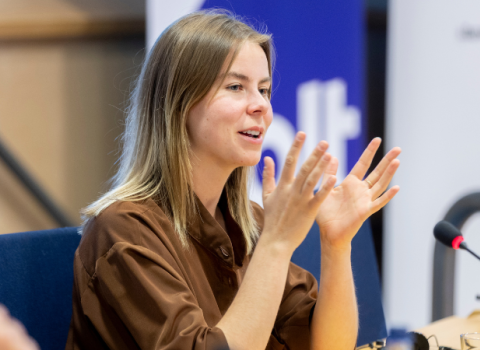Over 500 scientists have now put their names to an open letter of protest to the European Commission about the €1.2 billion Human Brain Project (HBP), questioning both its scientific validity and its governance, and threatening to boycott the flagship neuroscience research programme.
The letter makes accusations of opaque decision-making and claims HBP is pursuing inappropriate objectives.
“We believe the HBP is not a well-conceived or implemented project and that it is ill-suited to be the centrepiece of European neuroscience,” the letter says.
“Those behind the project do not carry the confidence of their scientific peers,” said Ray Dolan, professor of neuroscience, University College London, and one of the signatories. “I have not met a single person who joined the project at inception and now feels any intellectual affinity with what is going on.”
The HBP is an attempt to create a computer model of the brain down to the level of individual molecules, within a ten-year timeframe. Currently 112 institutions across Europe are signed up to take part.
The project has already been controversial among some sectors of the neuroscience community for its emphasis on large-scale mapping of the brain and computer simulations, over traditional, small-scale bench research, and some leading scientists have walked away.
Things took a decisive turn in May, when it became clear the project’s leaders intended to exclude studies on cognition from the future plan. This represented too much of a shift away from a neuroscience project into a technology-dominated one for many scientists.
The project, principally the brainchild of neuroscientist Henry Markram of the École Polytechnique Féderále, Lausanne (EPFL), builds on the Blue Brain collaboration, set up in 2005 between EPFL and IBM. In many respects the emphasis on computer modelling is not surprising, since HBP also has roots in the EU’s Future and Emerging Technologies (FET) programme, which has largely funded computer and robotics projects in the past.
“There’s never been a big science project that did not have a rebellion,” Markram told Science|Business. “But if we fear failure, we’re not going to make progress. The project has the potential to be completely revolutionary.”
However, the protest has gathered steam: the letter was signed by 156 European scientists when it was sent to the Commission on Monday, it now has 517 signatures, including a number of researchers from the US.
HBP was selected last year, along with the Graphene Flagship project, following a competition that was organized and run over two years by the FET programme. The ramp-up phase of the brain project began in October last year, with €54 million from Framework Programme 7, the predecessor to Horizon 2020.
Misguided and mis-managed?
Scientists who are lining up against HBP claim the mission of generating a simulation of the human brain is premature. They say that despite recent research contributing to better knowledge of the brain, not enough is known to put together a complex and accurate model.
Those against the project also say it has been oversold to politicians and the public and that results are many decades and experiments away from reality. “People are simply not prepared to put up with the PR fluff anymore,” said Dolan in an email, while Charles Capaday, a professor in biomedical engineering at the Technical University of Denmark, said HBP, “Has more to do with science fiction than science.”
There have also been accusations of favouritism in awarding grants. This is rejected by Markram. “The EU Commission has organised competitive open calls for the project,” he said. “They were all evaluated and chosen purely on merit. It was completely out of my control.”
With a small success rate of five per cent and a total of 400 proposals received during the call, Markram suggested that some scientists might have had a hard time accepting rejection.
Markram admitted that reading the letter was a “sad” experience, but said that the project could produce the platform technology around which to integrate the estimated €1 billion a year spent on neuroscience research in Europe.
Dissent and big science
Markram noted that dissent is par for the course with mega-science projects.
“In Einstein’s time, there were many saying his general theory of relativity was wrong. Some 100 physicians wrote a letter complaining about it. The Human Genome Project was the same. Scientists were afraid it would deprive other experiments of funding. But today, molecular biologists are the best funded scientists in the world,” he said.
The HBP has to work for the 10,000 neuroscientists in Europe, not just 400, Markram added.
As part of its established procedures, the Commission will assess the HBP in January 2015, when it has promised, “A rigorous annual review of the project to assess its advances in scientific and technological research, as well as the management and coordination of the flagship.” The review panel will include high-level experts.
“We will be questioned and interrogated,” said Markram. “If we haven’t delivered, we’ll be stopped.”However, he also acknowledged, “[The signatories] have some valid concerns; there’s some excellent scientists in the letter. We’ll have to work better to communicate. The goals of the project are not entirely clear to everyone, it seems.”




 A unique international forum for public research organisations and companies to connect their external engagement with strategic interests around their R&D system.
A unique international forum for public research organisations and companies to connect their external engagement with strategic interests around their R&D system.